
TED'S TOP TRAVEL TECH TIPS: DIGITAL SAFETY
Frequent travelers, particularly those who travel overseas, want to be able to stay connected on the internet to keep up with information, check emails or even do business as needed. Those who do so, will undoubtedly want to use use WiFi hot spots, both public and private, to access the internet.
How may of us have been on a cruise, or overseas jaunt where we have gone for days without an internet connection? Our first impulse is to duck into a nearby cafe and turn on smart phone or other device and get connected.

Security and WiFi
With all the recent talk about hacking and security breaches with computers and networks, it would not unreasonable to expect that one might be concerned about security when using these networks. You’re not alone. Open public WiFi networks are everywhere: coffee shops, airports, restaurants, shopping malls. Public WiFi is commonplace. And so are people’s concerns about their safety on unsecured open WiFi hot spots, but like you they go ahead and connect anyway.
In a recent survey, 70% of tablet owners and 53% of smartphone/mobile phone owners stated that they use public WiFi hot spots. However, because data sent through public WiFi can easily be intercepted, many mobile device and laptop users are risking the security of their personal information, digital identity and money. Furthermore, if their device or computer is not protected by an effective security and anti-malware product… the risks are even greater.
Think about how often you’re online. For some of us, it’s always. And consider how much of that online time involves being on an unsecured WiFi network because you’re out and about — and it’s available and you won’t max out your data plan.
Now think about what you do while you’re using public WiFi hot spots — and compare yourself to what other people do on public WiFi in the U.S., according to the Norton WiFi Risk Report released in June 2016.
While on public WiFi:
- 22% of respondents have accessed bank/financial information
- 56% of consumers have logged into their social media accounts
- 38% have shared photos or videos
- 58% of people have logged into a personal email account
All of these online daily habits, when conducted on public WiFi or any unsecured WiFi network, put your very private information at risk. All information on unsecured public WiFi is easily viewed by others using the same network if they know the simple tricks that cyber criminals use to eavesdrop on whatever you do online.
Get access to my blog which covers how to negotiate better rates and find insider travel deals not available elsewhere. Yes Ted, I want to see all your deals and tips!
Eavesdropping on public WiFi
The most common threat to your personal information is when hackers use a Man-in-the-Middle (MitM) attack to eavesdrop on your data as it travels from point A (your device) to point B (a website).
A MitM attack is made possible when a hacker has access to an unsecured or poorly secured WiFi router. The vulnerable WiFi could be out in public or in someone’s home, as long as the hacker is within range of the WiFi. The attacker uses special tools to scan the router looking for vulnerabilities such as default or weak passwords, or even security holes due to the router being set up without basic security. When the hacker finds a vulnerability, he then uses widely available tools to get in between points A and B to intercept any information — such as your bank account credentials, credit card numbers, or social media logins — that passes between the two.

In another approach, hackers will set up a WiFi connection with a legitimate-sounding name. All the hacker has to do is wait for you to connect and he’ll instantly have access to your device. Alternatively, the hacker can create a fake WiFi node disguised as a legitimate WiFi access point to steal the personal information of everyone who connects.
I was once astounded when a 16 boy described to me how easy it was for him and his friends to be able to hack into internet connections exposing others intimate details on their device in great detail. Having only a rudimentary knowledge of networking information in today’s normal adolescent lifestyle allowed them to gain knowledge that could be devastating to other users.
What if I lose my digital photos?
There is also the question of data storage. Many travelers take hundreds if not thousands of photos with digital cameras. Unlike manual cameras that required photo printing from negatives, today’s photographers amass digital images which are temporarily stored images on their camera. These can be stored on data cards which can be later inserted in a computer and downloaded to digital folders where they can be organized and accessed later or transferred to other devices.
As the recovery of these images are only as good as what method is used to store them, any damage or loss of these stored images could result in permanent loss of the files. One time, when traveling on a plane, someone brazenly snatched my device from off my seat when I looked away, along with all the photos stored on the camera. As a result I lost all the pictures from my vacation not to mention the expensive camera. The camera, however costly, was replaceable, the photos were not. Another time the files on my computer got corrupted and I could no longer access my photo files. With today’s risk of malware, potentially locking up your computer permanently today’s internet users are always at risk of losing their data.
Today’s travelers are also hit with excessive costs for staying connected when on board cruise ships. These normally have a per connection charge, the more devices connected the greater the cost. This can make the cost of connectivity during travel prohibitive for a family.
Receive my exclusive travel promotions, check out my Facebook Page CruisinWithTed and sign up for travel insider tips and deal all on my website: Yes Ted I Want To Learn More From CruisinWithTed!
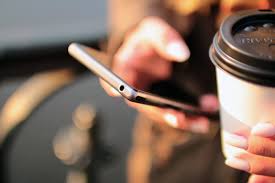
How to stay safe in a digitized world?
One way of helping create a buffer between you and the hot spot is the use of a cell phone hot spot. This is something you would set up with your mobile provider and pay monthly for data usage. However this may not be feasible based on costs or availability.
You might also want to consider a personal travel router which can be used anywhere to serve as a password protected bridge between you and any WiFi hot-spot. This will offer some protection as there will be no direct connectivity between your device and the WiFi hub. It also allow for better wireless connectivity. This will at least ensure your connection is password protected and enable you to relay the signal to other devices that is also password protected.
Join me on Facebook, Like My Page: CruisinWithTed
A technical website, Lifewire, recently aptly covered the subject of travel routers and their use:
A travel router is a category of broadband routers designed to help people connect their mobile devices. Travel routers (also sometimes called mobile routers) typically possess several characteristics that distinguish them from other broadband routers:
- compact size – Many travel routers are only a few inches (less than 10 cm) in width or height and thin enough to slip into a pocket. Their small size makes them convenient to carry from place to place.
- battery powered – Good travel routers feature a built-in rechargeable battery that enables the router to be used for at least a few hours without being connected to an electrical outlet.
- tethering capability – To supply online connectivity when Ethernet or wireless hotspot services aren’t available, a travel router shares Internet access via a tethered 3G/4G cell phone. (High-end mobile routers incorporate a built-in cellular modem that eliminates the need for tethering.)
- Wi-Fi client support – advanced routers can join hotspots as a Wi-Fi client and in turn share that same connection out to other clients via its own built-in access point.
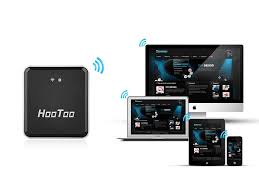
Common Uses for Travel Routers
A mobile router can be used to
- help a family more conveniently share one paid Internet connection at a hotel
- allow business travelers to more easily share files with each other
- stay connected while hiking or boating outdoors

Released in 2015, the title of the best-of-the-best travel routers handily belongs to the HooToo TripMate. Packing a super powerful battery that enables up to two smartphone charges, the HooToo can quickly convert a wired network into a secure wireless one. Internally, the MTK7620 chipset offers faster overall performance and, with one USB hub, you can attach up to a four-terabyte flash drive for dropping or transferring files. The HooToo functions as a wireless router upon connection to a DSL, modem which is most commonly found in hotels or motels around the world.
For Amazing Travel Insight and Tips: Check Out My Blog
Additionally, the TripMate Plus app is available for both iOS and Android and it allows you to control all the settings straight from your smartphone. Plugging in directly into a wall outlet allows the HooToo to recharge its battery for another day of smartphone charging. As a bonus, the HooToo offers the direct capability to input the username and password from the portal of a paid hotel WiFi network directly into your computer, tablet or smartphone, so you can bypass the need for any direct connection to your hotel’s insecure Internet.
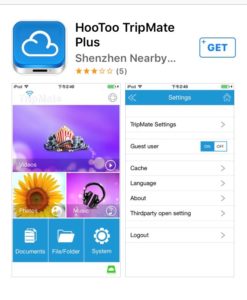
By setting up a password for this unit, which can fit into the palm of your hand, to send out its signal to multiple devices means that this signal is now password protected. This is really the simplicity of this device. It is nothing more than a relay of a wired or wireless internet signal to multiple devices. However when one discovers all of the different applications it has and how it can protect your wireless devices and the content they contain, the real vale of this little gem, which can be purchased for under $20.00 increases exponentially with every use.
I have found the unit, HT-TM02 TripMate Nano Wireless N Pocket Travel Router, best fits my needs. It does require a power source, I use a portable battery unit, however its small size makes it perfect for traveling. This will fit right into the wireless router for safe data store of your photos and documents. The TripMate Nano contains a USB port for a flash drive, an Ethernet port for direct routing and a switch for manual or wired internet connections.

Add more features to this set-up such as built in batteries, as the router has an outlet for a mini-data storage device such as a a usb flash drive, I use the SanDisk Ultra Fit 128GB USB 3.0 Flash Drive, that stores 128 gigabytes of data. Then through a phone App that allows complete set up of the incoming internet signal, password creation, data transfer between devices and USB flash drive, this puts a whole world of security and freedom into the palm of your hand.
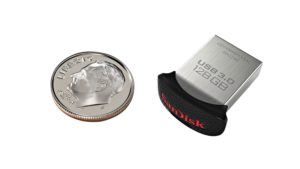
How to turn your camera into a WiFi Hot Spot
Now if you have a recent model digital camera it probably comes with with built in WiFi, or, lacking that, the use of of WiFi camera data card, one is able to stream pictures from your camera right to your smart phone or the flash drive on your portable router. I use the EZ Sh@re 32 Gigabyte model. This also comes with its own phone App.
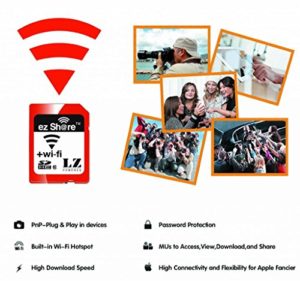
Although data storage purist may insist that the cloud is the only way to store data, I still prefer a having my own physical access to my digital storage. I have lost faith in the Microsoft world of computing, never bothered to learn all its drudgery. I simply detest the constant updating and mumbo-jumbo: I ditched my laptop years ago and have found that I can do just about everything from my smart phone.
Hey Ted, I’m not sure if I need all this fancy gear for my next vacation but I would like to discuss with you how save a buck or two on my travel plans. Click here for Ted’s travel benefits email hello@cruisinwithted.com or call 954-290-8626.






